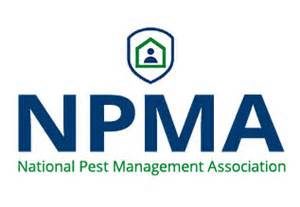Proudly serving Lake County IL, Eastern McHenry County and Northern Cook County
About Animal Control Specialists
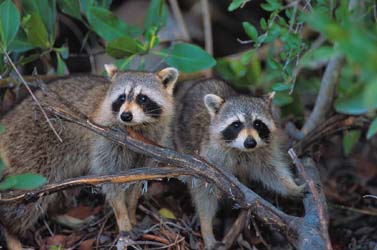
Animal Control Specialists, Inc. was established in 1991 and since the beginning; an uncompromising goal to solve every problem we encounter in a professional, expedient manner has been our continued mission.
Animal Control Specialists, Inc. is a Lake County pest control company. We specialize in humane solutions to nuisance, urban wildlife problems. Some of the wild animals that we control include;
- Raccoons
- Squirrels
- Skunks
- Opossums
- Groundhogs or Woodchucks
- Birds
- Bats
- Beavers
- Coyotes
- Flying Squirrels
- Dead Animal Removal
We are also licensed pest control operators and specialize in the treatment/removal of stinging insects such as;
▪ Bees
▪ Wasps
▪ Hornets
In addition to wildlife trapping, we install many exclusionary devices to prevent future wild animal problems. From chimney caps to deck screens our animal proofing will provide years of protection for your home or structure (products).
We service the North and Northwest suburbs of Chicago, Northern Cook County, Lake County and Eastern McHenry County in Illinois
Do you have a WILDLIFE EMERGENCY? We're ready to help.
SAME DAY SERVICE
Available!
(847) 827-7800
Contact Us
What Can be Done About Skunks Digging Up Lawn
Many homeowners spend a ton of time working on their lawn to make sure it looks fantastic. However, they may wake up one morning to find the lawn has been damaged and they will need to spend quite a bit of time to get everything back in shape again. Though most...
Birds that Nest in Vents can be Troublesome to Homeowners
Birds are often beautiful, but they can easily cause problems, as well. A bird's nest built in a pretty tree might make for a pleasant addition to a property, but a difference of location can make for a truly troublesome experience.Some birds, for example, end up...
Testimonials
Very professional and quick!
I had left some sweets out and may have expected a few ants… I was amazed to find a family of raccoons had moved into my basement!
Animal control specialist was quick to respond and not only removed the raccoons, but sealed their point of access so they would not return.
I was worried about how humanely they would resolve the problem and was very pleased to see that they checked the cages every day… Including Sunday!
In the time that I’ve been associated with this organization (over 10 years!) I have never been disappointed with their performance or professionalism.
They respond to my requests quickly regardless of when I call. They take care of the problem and leave the facility as neat and clean as they found it, if not better.
I would refer Animal Control Specialists to anyone!
Contact Us Today!
Call (847) 827-7800 or
Meet Our Technicians
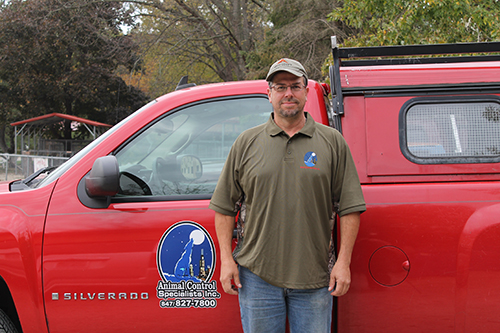
John
Owner
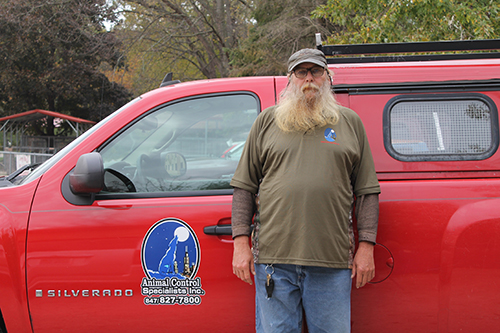
Norm
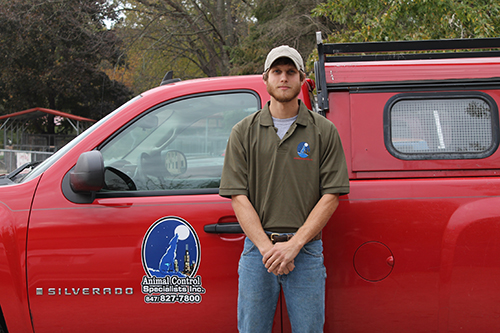
Michael

Robert

Norm III
Wildlife Management Policy…
Animal Control Specialists, Inc is always concerned for the welfare of wildlife.
 Animal Control Specialists, Inc. always encourages preventative measures to help keep wildlife from becoming a nuisance. Although some problems can’t be predicted or prevented, the chance of a human/ wildlife conflict can be greatly reduced. The nature of most people, however is to worry about things after the fact. With this being the rule rather than exception, conflicts are going to occur. In some cases we will recommend a simple solution that may not require our services. For example, a raccoon that gets into garbage cans doesn’t necessarily need to be trapped. There are generally better long-term options, such as putting them in an enclosure so they are inaccessible to the animals. However there are many situations that do require the professional services that we and other reputable wildlife control companies provide.
Animal Control Specialists, Inc. always encourages preventative measures to help keep wildlife from becoming a nuisance. Although some problems can’t be predicted or prevented, the chance of a human/ wildlife conflict can be greatly reduced. The nature of most people, however is to worry about things after the fact. With this being the rule rather than exception, conflicts are going to occur. In some cases we will recommend a simple solution that may not require our services. For example, a raccoon that gets into garbage cans doesn’t necessarily need to be trapped. There are generally better long-term options, such as putting them in an enclosure so they are inaccessible to the animals. However there are many situations that do require the professional services that we and other reputable wildlife control companies provide.
Some people believe that letting animals reside in an attic or chimney doesn’t cause a problem. I have heard recommendations to leave the animals alone and after the young grow up the whole family will leave on their own. However, there are many faults with this “logic”. First of all, every day that an animal is inside a structure it is doing damage. Soiling insulation, damaging attic fans, staining ceilings and tearing up stored items or duct-work are just a few examples of commonly seen damage. Not only are these costly to replace or repair, but also the smell left behind by the animals, their urine and their droppings, becomes an attractant to other animals that recognize the area as a den site. Secondly, if the animals are allowed to propagate the number of animals that think of the structure as a den site increases.
The chance of future problems rises dramatically when faced with what we call a generational problem. In these cases it is very common to return to the same home year after year for reoccurring wildlife infiltrations. Also, young animals tend to get themselves into trouble as they begin to explore their surroundings. They commonly fall down into hollow walls or into the fireplace where they can’t get out or end up in the living space of a home. Thirdly, wildlife can introduce foreign invaders. These include fleas, ticks, mites and a risk of carrying transmittable diseases such as rabies, histoplasmosis, tularemia, distemper, and an incurable parasitic worm that travels through the nervous system of it’s host. These are not a common risk (except for the fleas and mites) but they do exist and must be considered. All of these reasons, among many others show the need to manage the urban wildlife population.
Originally, encroachment on wildlife habitat resulted in the first problem animals. Adaptability and opportunism enabled animals to take advantage of new food sources (garbage, gardens, etc) and den sites (attics, chimneys, decks, barns, etc.). Now a majority of wildlife that becomes a nuisance learns this behavior from its parents. Animals that are born in an attic, chimney, etc. grow up to do the same. They in turn have offspring that continue the cycle.
Each animal whether it is a raccoon, squirrel, opossum or coyote or other fauna (indigenous wildlife) has it own territory. This territory may be shared by family members and will often overlap the territories of neighboring animals of same and different species. The size of an animal’s territory is dependent upon many factors. These include population density, food and water supplies and available den sites. Too many animals in an area can exceed the carrying capacity of the habitat resulting in forced migration, illness, starvation and death. This is a common, natural occurrence that often results in cyclical increases and decreases of population densities.
Economic losses due to wildlife are substantial and although it would be preferred to stop urban sprawl and return land to its natural state, this is not likely to happen. Therefore, managing wildlife is not only beneficial but also necessary. The combined effects of wildlife adapting to life in our neighborhoods and our neighborhoods swallowing up their natural habitat has necessitated the need for removal of some of these “nuisance” animals.
For the general overall health of the population as a whole this should not include relocation in most instances. Many people believe that releasing an animal somewhere else is the kind thing to do. However, many detrimental issues must be considered. First of all, overpopulation of release sites. Any place that an animal is introduced will already have a population of wildlife that is at its carry capacity, which is limited by resource available to sustain life. The individual animals released will be put into the territory of another and won’t be tolerated by the inhabitants of the area. They are subject to great stress and often travel great distances to find a suitable habitat, if found at all. This forced migration is fraught with danger, whether crossing unfamiliar roadways or being unfamiliar with surroundings to be able to hide from danger such as predators. This stress is not limited to the relocated animal but also the active inhabitants. Overpopulation can result in spread of disease, such as rabies, distemper and mange. All of which cause many animals to perish. Secondly, the animals that have been raised in urban areas don’t know anything else. These animals are not in their natural habitat in the wild. These relocated animals will return to a neighborhood and continue the habitats that got them in trouble in the first place. Except that now they have been classically conditioned to avoid the traps or other methods that were used to capture them initially. So now a problem for one person has become a worse problem for another.
Studies of radio collared animals has shown that those captured in an urban setting and relocated into a wild habitat have a mortality rate of 50% and the remaining return to neighborhoods, some being found to travel 50 miles or more. Conversely, animals captured in their natural habitat, radio collared and released remained in the natural habitat.
The majority of wildlife that we receive complaint calls on are an urban population and not displaced or migrating from adjacent natural habitats. These animals should not be relocated. Wildlife management requires the consideration of populations as a whole. Therefore, Animal Control Specialists, Inc. has a policy of not relocating captured animals.

